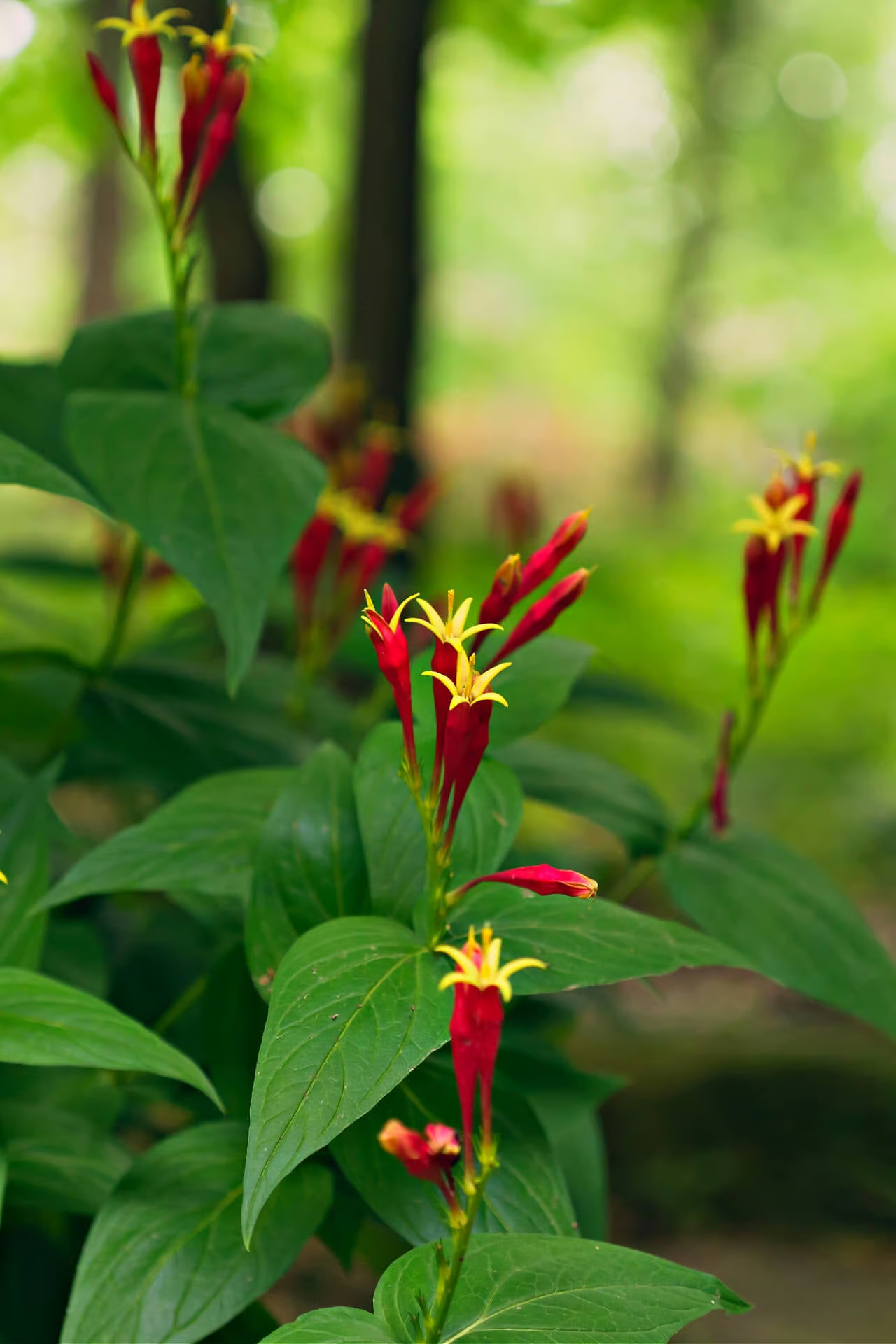Spigelia Indian Pink - Spigelia marilandica
Spigelia Indian Pink is a native wildflower beloved for its striking tubular, red-and-yellow flowers, which attract hummingbirds and thrive in shaded woodland gardens. Incorporating landscaping projects offers many benefits, enhancing outdoor spaces' visual aesthetics, ecological diversity, and overall vibrancy. This unique perennial plant presents distinct features that contribute to various aspects of landscape design.
It is a stunning herbaceous perennial native to woodland areas across the inland regions from Texas to Florida and Virginia to Missouri. This wildflower plant has a distinctive flower and is commonly grown in gardens as an ornamental plant. After a closer look at this beautiful flower in the Astrid family, you can easily incorporate it into your landscaping design.
The Eye-Catching Beauty Spigelia Indian Pink
This wildflower has a stunning look that is easily identifiable. The flowers bud straight out from the top of the stems in an elongated fashion. This bright red or pink bud then sprouts a small, delicate flower at the top. This yellow flower has a star-like shape with six petals. The large, pointed leaves have a dusty green hue. When the plants are in full bloom, usually in May, you can enjoy a sea of green, red, and yellow in your garden.
Spigelia Indian Pink is Great For Supporting Wildlife
This plant strongly attracts hummingbirds to its flowers. Hummingbirds are natural pollinators, promoting the health of other plants in your garden. In addition, hummingbirds eat wasps, mosquitoes, aphids, ants, and other pesky insects that you may prefer to keep out of your space. The roots of this lovely plant also dispel several types of worms that could otherwise damage the plants.
The Hardiness Of This Stunning Native Perennial
While this wildflower plant prefers moist soil, it is hardy enough to withstand drought. When it has adequate moisture, the plant will grow taller and thicker. The dry months of the year stymie growth and often transition into the colder weather season when the plant lies dormant. However, the blooms will return in the spring months.
It grows in clumps up to two feet tall and two feet wide.
When planted ornamentally, these plants are often shaped through pruning. Commonly, they are rounded to appear as bushes. However, they can also grow broadly by retaining their free, wildflower look. The plants spread through natural propagation, and you can facilitate growth by planting the cut stems.
Where Does it Grow Best
It requires partial to full shade location and grows best in moist, well-drained soil that is rich with organic matter. These plants are indigenous to wooded habitats, so they're well suited to shaded gardens.
How tall does it get
This perennial plant can grow between 12 to 18 inches high and is suitable in borders, woodlands, and container arrangements.
How To Grow them
Plant it in the part of the garden that receives shade or partial sunlight and on soil that is always moist and fertile. Irrigate frequently when the plants are growing only and employ mulching to conserve moisture on the roots.
What is the Bloom color?
They have big tubular red flowers that have a bright yellow interior. They are much loved and favored by pollinators such as hummingbirds and butterflies.
Can they be Divided
Yes, Spigelia can be divided; it is generally done in spring or fall. Dig the plant gently, divide the roots, and replant so they can regrow again.
